
Applications of marine biological materials
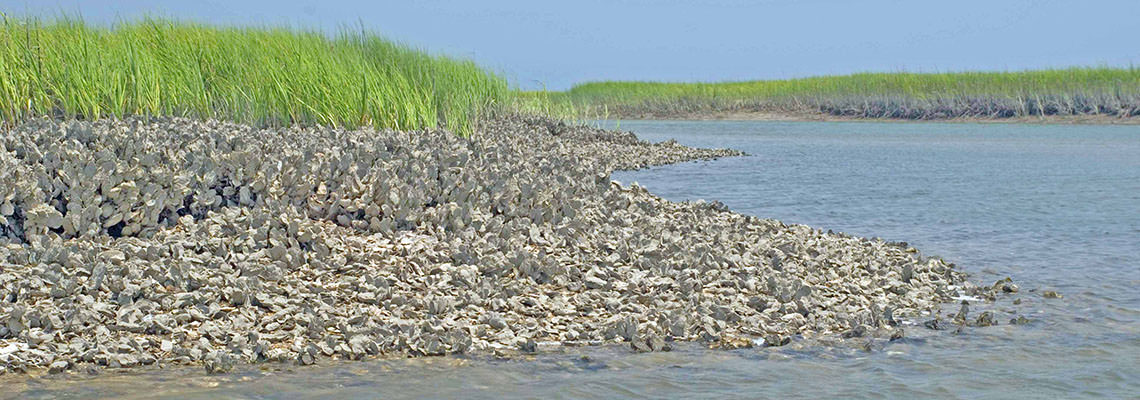
Developing Biomedical Materials, High-Performance Adhesives, and Antifouling Coatings
The underwater adhesion and high bonding strength of marine biological materials bring to mind many applications ranging from wet-setting biomedical adhesives to new materials with tailored moduli. Current materials engineering efforts rely on our ability to synthesize biomimetic polymers on large scales. As we incorporate more advanced functionality into the polymers we can tailor the materials for a given use.
Wet-setting and underwater adhesives remain in demand. Challenges here include devising wet-setting cure chemistry as well as displacing surface layers of water for strong adhesion. A logical application for polymers mimicking marine proteins is underwater adhesion. Ship repair while at sea and the attachment of underwater sensors will be enabled once a good wet adhesive system is developed. Initial testing has shown that our biomimetic materials create strong bonds when underwater. Click here to see a video of our polymers sticking underwater.
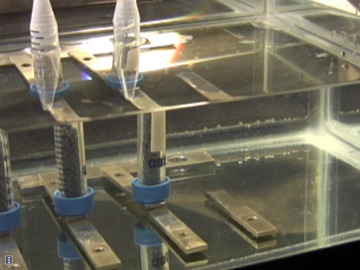 |
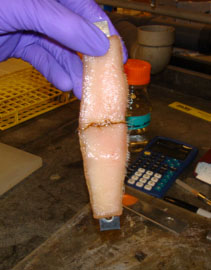 |
| Bonding metal substrates while underwater. | Two pieces of wet pig skin can be adhered with our new polymers. |
Beyond adhesion, we are developing antifouling coatings to prevent the attachment of marine organisms to ship hulls, thereby reducing fuel use and carbon dioxide emissions from the world's shipping fleet. Our chief antifouling strategy begins with the insights gained on how marine organisms stick from ongoing characterization efforts. As we discover the adhesion mechanisms of shellfish, we then have chemical targets to attack for making antifouling coatings.
Bifunctional polymers can both adhere to make a good coating as well as repel marine organisms. Likewise, antifouling polymers will be useful to prevent bacterial fouling and the resulting failure of implanted biomedical devices. High-performance rustproof coatings are also being developed, beginning with the required strong surface-bonding.
Cross-linking polymers may provide matrices for the cell growth needed in organ generation and tissue engineering. Tuning the degrees of cross-linking in the materials alters the porosity. Also able to be tailored as needed is the modulus, with brittle, elastic, and viscoelastic properties all available.
Perhaps most in demand are new adhesive materials for biomedical applications. At the moment there are no adhesives available that are simultaneously wet-setting, strong-bonding, and non-toxic. Marine biology may have already solved this problem, hence the exploration of these materials for biomedical applications. As can be seen in the photographs here, our new bio-inspired adhesives provide bonding to soft and hard biological substrates.
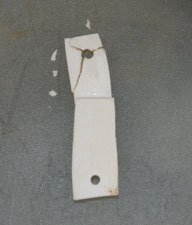 |
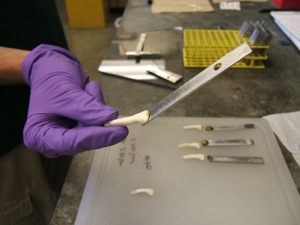 |
| Bone can be bonded with strengths exceeding that of the material itself. Two pieces of bone were glued together and pulled apart. The bulk bone shattered while the adhesive bond remained intact. | A cow tooth bonded strongly to a metal substrate. |